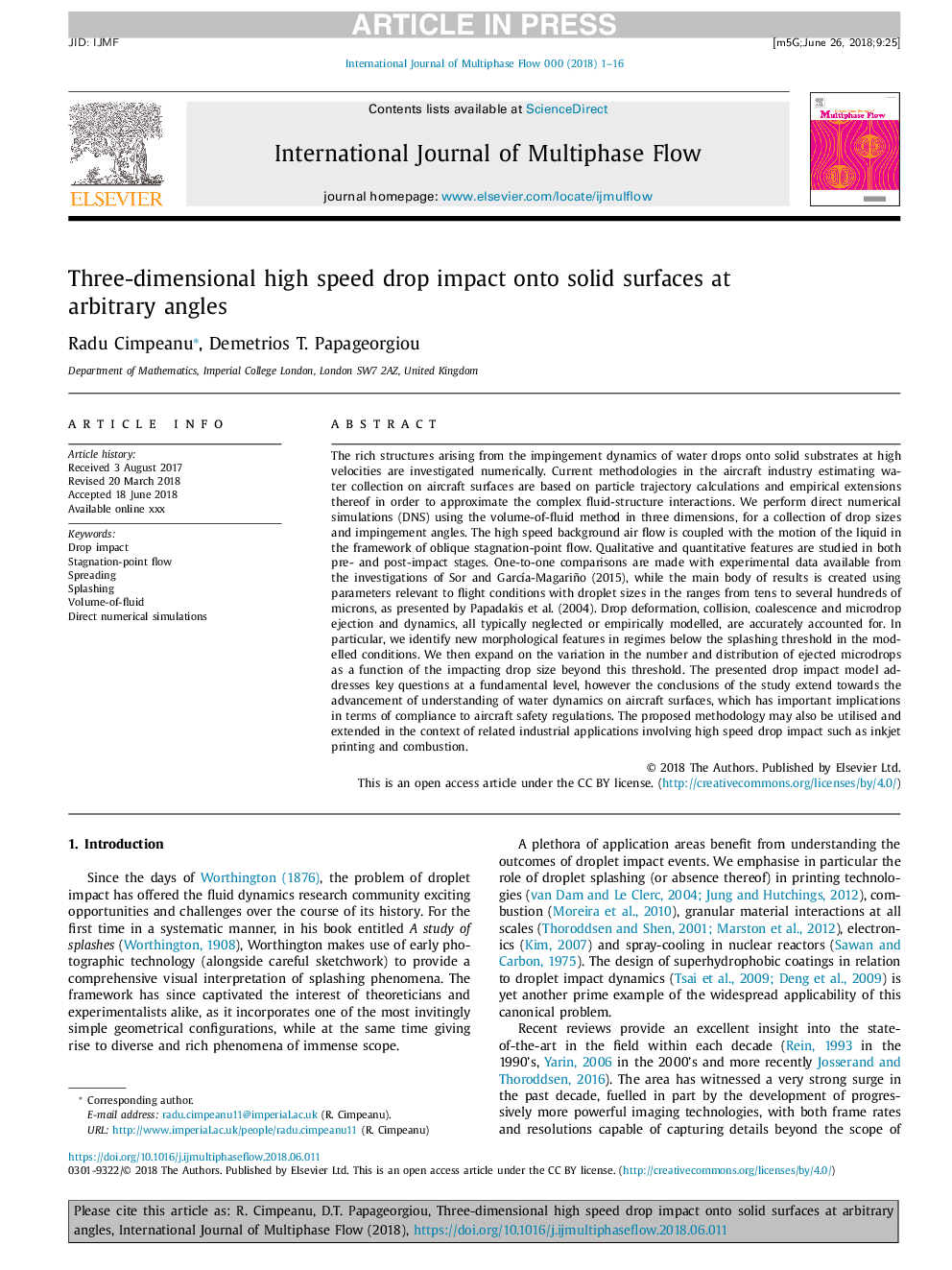| Article ID | Journal | Published Year | Pages | File Type |
|---|---|---|---|---|
| 8941997 | International Journal of Multiphase Flow | 2018 | 16 Pages |
Abstract
The rich structures arising from the impingement dynamics of water drops onto solid substrates at high velocities are investigated numerically. Current methodologies in the aircraft industry estimating water collection on aircraft surfaces are based on particle trajectory calculations and empirical extensions thereof in order to approximate the complex fluid-structure interactions. We perform direct numerical simulations (DNS) using the volume-of-fluid method in three dimensions, for a collection of drop sizes and impingement angles. The high speed background air flow is coupled with the motion of the liquid in the framework of oblique stagnation-point flow. Qualitative and quantitative features are studied in both pre- and post-impact stages. One-to-one comparisons are made with experimental data available from the investigations of Sor and GarcÃa-Magariño (2015), while the main body of results is created using parameters relevant to flight conditions with droplet sizes in the ranges from tens to several hundreds of microns, as presented by Papadakis et al. (2004). Drop deformation, collision, coalescence and microdrop ejection and dynamics, all typically neglected or empirically modelled, are accurately accounted for. In particular, we identify new morphological features in regimes below the splashing threshold in the modelled conditions. We then expand on the variation in the number and distribution of ejected microdrops as a function of the impacting drop size beyond this threshold. The presented drop impact model addresses key questions at a fundamental level, however the conclusions of the study extend towards the advancement of understanding of water dynamics on aircraft surfaces, which has important implications in terms of compliance to aircraft safety regulations. The proposed methodology may also be utilised and extended in the context of related industrial applications involving high speed drop impact such as inkjet printing and combustion.
Keywords
Related Topics
Physical Sciences and Engineering
Chemical Engineering
Fluid Flow and Transfer Processes
Authors
Radu Cimpeanu, Demetrios T. Papageorgiou,
